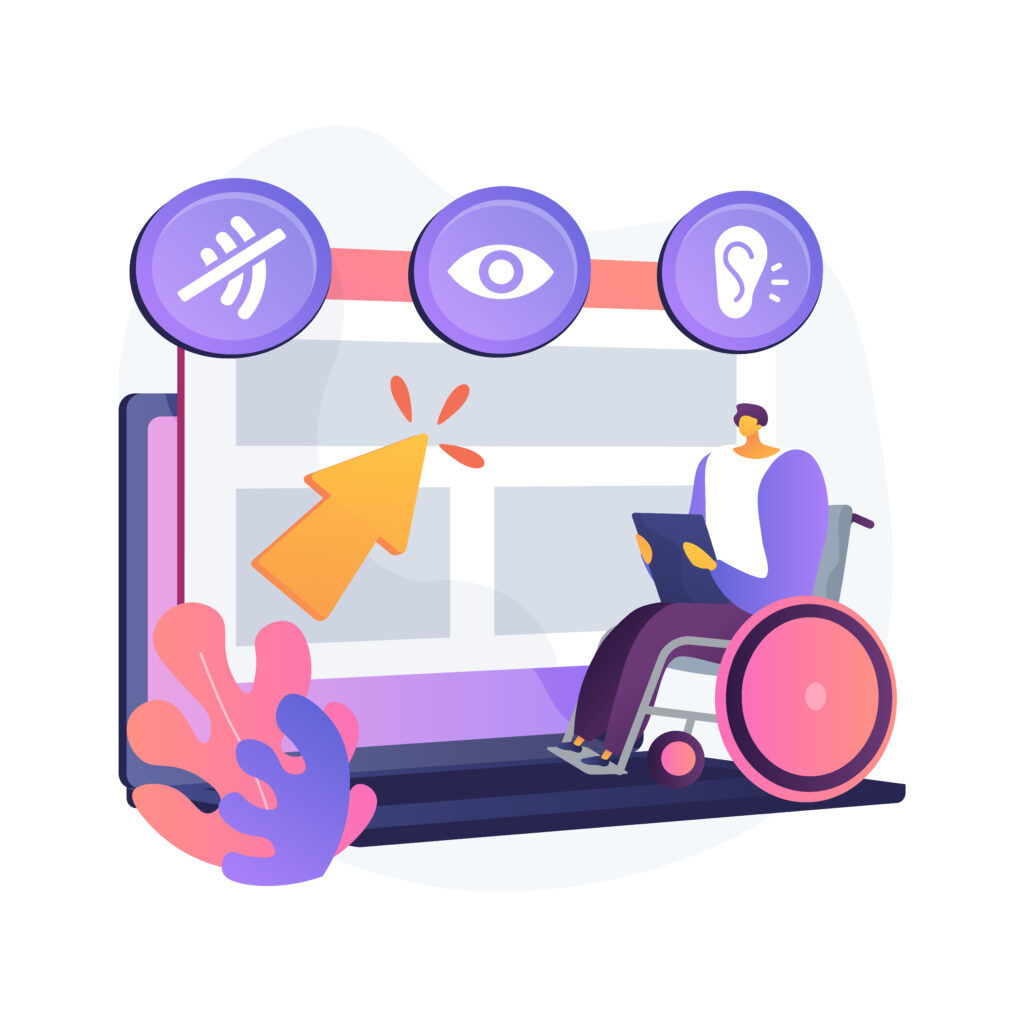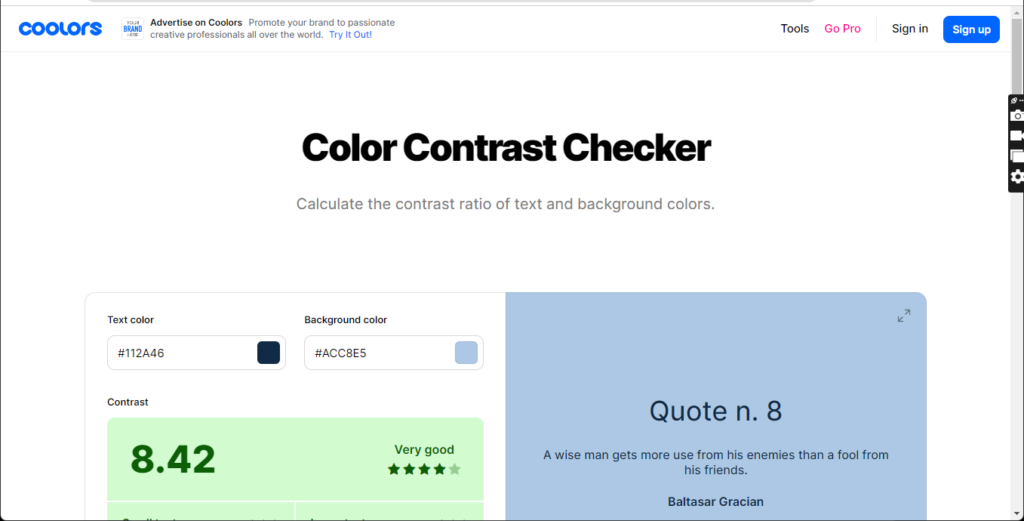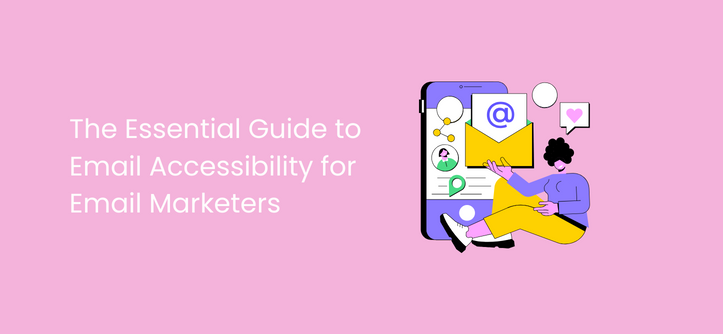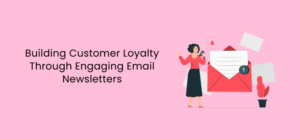As an email marketer, you want every subscriber to have a positive and inclusive experience when engaging with your campaigns. But if your emails aren’t designed with accessibility in mind, you risk excluding a large percentage of your audience with disabilities. This is where email accessibility best practices come in. By implementing them, you can ensure all your subscribers can understand and interact with your emails.
This article will cover why email accessibility is essential and provide 10 best practices for crafting accessible emails. I will also share tools to help with email accessibility and tips for testing and measuring your campaigns. So, let’s dive in and ensure your emails are inclusive for everyone.
Why Email Accessibility is Important
Every person deserves the right to access and interact with content, regardless of physical or cognitive abilities. When it comes to email marketing, accessibility is not only a legal requirement, but it is a moral obligation that every email marketer should take seriously. Accessibility means designing emails that can be easily consumed by everyone, including those with visual, auditory, physical, or cognitive disabilities.

Importance of Accessibility in Email Marketing
- Inclusivity: Accessibility ensures that individuals of varying abilities can comprehend and interact with your email content. This broadens your audience reach and promotes inclusivity.
- Legal Compliance: Lots of countries have laws and regulations that require digital content, including emails, to be accessible. Adhering to these laws is essential to avoid potential legal issues.
- Enhanced User Experience: Accessible emails provide a better user experience for all recipients. This, in turn, boosts open and click-through rates, ultimately enhancing the effectiveness of your email campaigns.
- Brand Reputation: Prioritizing accessibility demonstrates your brand’s commitment to inclusivity and that makes your brand reputable.
Mind-Blowing Statistics about Disabilities
The statistics speak for themselves when it comes to the importance of accessibility. According to the World Health Organization WHO, approximately 1.3 billion individuals struggle with significant disabilities, constituting 16% of the global populace, which equates to 1 in every 6 people. In addition, over 2.2 billion people globally have a near or distance vision impairment, and by 2050, an estimated 700 million people will suffer from disabling hearing loss. These numbers highlight the significance of designing emails with accessibility in mind. .
10 Best Practices for Crafting Accessible Emails
The goal of every email marketer is for their emails to reach as many people as possible. But if your emails aren’t designed and written with accessibility in mind, a large number of your audience with permanent or temporary impairments may not understand or interact with your emails. So, how can you ensure your emails are accessible to everyone?
Here are 10 best practices you can follow to make your emails more accessible:
1. Follow Logical Structure: Your emails must be structured logically to help readers easily understand their flow. Use descriptive headers, subheaders, and bullet points to organize information.
2. Use Descriptive Subject Lines: A descriptive subject line helps users decide whether to open their email. Additionally, people who use screen readers rely on subject lines to determine which emails to read and which ones to skip.
3. Don’t Rely on Color for Focal Points: Not everyone can see colors similarly, so don’t use color alone to convey important information. Use other visual cues like icons, shapes, and contrast.
4. Use Responsive Design: Your email designs should respond to different screen sizes and devices. This is especially important for people who use mobile devices.
5. Check Your Code: Use proper coding practices to ensure your emails render correctly across different email clients and devices.
6. Tag Your Images with Alt Text: Alt text also known as Alternative Text is a written description of an image. When an image has alt text, assistive technologies like screen readers can read it aloud to users, providing them with an understanding of the image’s content or purpose. This allows individuals with visual impairments to access and comprehend the information presented in images, including graphics, photos, and icons. See a sample of an image with alt text below.

7. Check Your Text Size and Spacing: Make sure your text is easy to read by using a minimum font size of 14 pixels and potentially 16 pixels or above for mobile devices. The spacing between lines and paragraphs should also be appropriately sized to avoid overcrowding and confusion.
8. Use Emojis Wisely: Emojis can add a fun element to your emails, but some people may not be able to see them. Use them sparingly and only if they add value.
9. Check Your Font: While decorative or fancy fonts might be visually appealing, they can be challenging to understand, especially for individuals with visual or cognitive disabilities. Stick to simple, legible fonts to ensure clarity. Choose a simple and easy-to-read font like Arial, Tahoma, or Calibri. Avoid fancy or illegible fonts.
10. Prioritize Quality Content: The ultimate aim of any email marketer is to deliver information that benefits subscribers. Make sure the content they are reading truly adds value. Avoid wasting their time with unnecessary information, as that might lead them to unsubscribe or mark your emails as spam.
By implementing these best practices, you can improve the accessibility of your emails and make them easier for people to read, understand, and act on. Remember, the goal is to make your emails accessible to as many people as possible, regardless of impairments or disabilities. So, strive to create a positive experience for everyone interacting with your email campaigns.
Tools to Help with Email Accessibility Testing
It’s important to test email accessibility to ensure that all subscribers can read and interact with your messages. This means running accessibility tests on images, links, and text to ensure they are usable for all users. You can use the following:
- Screen reader emulators– This allows you to experience how your email is read by those who depend on assistive technologies. This can give you valuable insight and help you optimize your emails accordingly.
- Color contrast checkers – This will help make sure that your design choices do not negatively affect readability for visually impaired subscribers. See an example of a color contract tool to explore below.

Using these tools, you can be sure that you are providing a positive experience to your subscribers, regardless of their ability.
Measuring Email Accessibility
It’s also important to measure the accessibility of your emails over time. Check your email stats to determine how many people open and interact with your emails. You should also check if engagement differs between those with and without disabilities. This will help you understand the impact of your efforts and how you can improve over time. Consider doing the following:
- Email Engagement Analysis: Start by delving into your email statistics. Analyze the data to ascertain the extent of email opens and interactions. This initial step provides insight into the reach and impact of your email campaigns.
- Segmentation Analysis: Segment your email audience into two categories: those with disabilities and those without. This segmentation will enable you to compare the engagement levels between these two groups. Are individuals with disabilities opening and interacting with your emails at a rate comparable to those without disabilities? This comparison can yield valuable insights into the accessibility of your content.
- User Feedback and Testing: Solicit feedback from individuals with disabilities on your email list. Conduct usability testing with screen readers and assistive technologies to ensure your emails are genuinely accessible. This real-world feedback can highlight specific pain points and areas for improvement.

- Accessibility Compliance Metrics: Assess the compliance of your emails with accessibility standards such as WCAG (Web Content Accessibility Guidelines). Tools and automated accessibility checkers can assist in identifying issues such as alt text for images, proper heading structures, and keyboard navigation. Regularly check and document your progress in addressing these accessibility concerns.
- Benchmarking: Compare your email accessibility metrics with industry benchmarks. This can provide context for your performance and help you set realistic goals for improvement.
- Iterative Improvement: Based on your findings, continually refine your email accessibility strategies. Implement changes to address accessibility issues and monitor the impact of these modifications on user engagement.
Conclusion
In summary, ensuring email accessibility is essential for creating an inclusive experience for all subscribers, regardless of their abilities or requirements. Following the best practices of well-organized structure, descriptive subject lines, responsive design, alt text, suitable font and size, and impeccable content is the key to achieving accessibility. There are tools available, such as accessibility checklists and color contrast checkers, that you can utilize to monitor your email’s accessibility. To ensure effective delivery, test and measure your email accessibility. While accessibility promotes better email metrics, it’s also about making your email campaigns more inclusive for everyone. So, it’s necessary to remember this aspect when creating and writing your email campaigns, leading to better engagement with all your subscribers.




